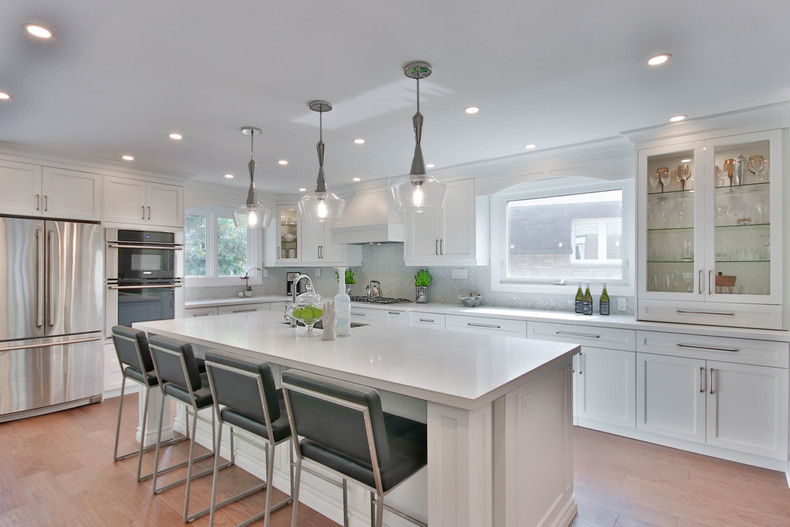Add Charm and Character to Your Area with Legs For Kitchen Island Creations
Add Charm and Character to Your Area with Legs For Kitchen Island Creations
Blog Article
An Overview to Picking the Perfect Legs For Kitchen Island for Your Home
Picking the ideal legs for your cooking area island is a nuanced choice that influences both the performance and visual appeal of this main room. As you think about these aspects, it becomes evident that the appropriate legs can change not only the look of your cooking area however also its usability for years to come.

Understanding Cooking Area Island Legs
When selecting legs for a cooking area island, it's necessary to recognize their functional and visual duties in the overall style. The legs work as an essential support group, ensuring stability and longevity for the island, which typically operates as a workspace, dining area, or collecting place. For that reason, the option of product and construction technique need to be durable adequate to withstand daily use and prospective wear.
Along with their structural responsibilities, legs contribute considerably to the island's visual charm. They can improve the kitchen area's style, whether through conventional, contemporary, or eclectic designs. The height and proportion of the legs are also critical considerations; they must harmonize with the island's countertop elevation while making certain comfy seating for those using the space.
Moreover, the leg design can affect the total circulation of the kitchen area. Open, airy leg styles can produce a feeling of agility, while solid, significant legs may convey a more based and secure aesthetic - Legs For Kitchen Island. Comprehending these functional and aesthetic aspects will lead home owners in making educated options that complement their kitchen's design and boost its functionality
Popular Styles and Materials
The selection of legs for a kitchen area island encompasses a selection of preferred styles and products, each offering distinct features that can enhance both performance and visual appeals. Standard legs generally display luxuriant details and craftsmanship, improving timeless cooking area designs.

Elevation and Stability Factors To Consider

The legs of the cooking area island ought to give sufficient assistance, ensuring that the structure can hold up against everyday usage without wobbling or changing. Product option plays a significant function in security; steel legs, for instance, have a tendency to supply greater stamina contrasted to timber.
Matching Your Cooking Area Aesthetic
Choosing the ideal legs for your cooking area island goes past performance; it likewise plays a considerable function in the general aesthetic of the area (Legs For Kitchen click reference Island). When selecting legs, think about the design style of your kitchen.
Legs that enhance or contrast with your island's surface and bordering cabinets can create aesthetic harmony or striking focal points. In addition, think about the finish of the legs; matte, shiny, or textured coatings can substantially impact the total feel of the kitchen.
Installment and Maintenance Tips
Setting up cooking area island legs requires cautious focus to detail to make sure both security and aesthetic charm. Make use of a stud finder to locate wall studs if you are affixing the legs to a wall surface or using braces for included support.
When securing the legs, make use of high-quality screws and, if needed, timber adhesive for additional stamina. For steel legs, make certain that you are using suitable anchors and devices to stop damage to your flooring. It is recommended to examine for levelness after installment, making adjustments as needed to avoid wobbling.
Maintenance is similarly vital for long life - Legs For Kitchen Island. Routinely inspect the legs for any type of indications of wear or helping to loosen, specifically in high-traffic locations. Tidy the legs with an ideal cleaner, staying clear of unpleasant products that might damage the surface area. For wood legs, take into consideration using a timber conditioner occasionally to keep their surface. By complying with these setup and maintenance ideas, you can make sure that your kitchen area island legs stay both visually enticing and useful.
Verdict
To conclude, choosing the suitable legs for a kitchen island demands cautious consideration of elevation, security, and visual compatibility. By choosing ideal products and styles that straighten with the general kitchen layout, performance can be enhanced while keeping visual appeal. Correct installation and recurring maintenance further add to the toughness and longevity of the cooking area island. Eventually, thoughtful leg selection plays a critical function in boosting both the functionality and design of the kitchen area space.
When selecting legs for a kitchen area island, it's essential to comprehend their visual and useful roles in the general design. Open, airy leg designs can create a feeling of agility, while solid, considerable legs might convey a more grounded and secure aesthetic. The legs look at this website of the kitchen area island must offer sufficient assistance, making certain that the structure can stand up to daily use without wobbling or shifting.Setting up kitchen island legs requires careful attention to information to make sure both security and visual appeal.In final thought, selecting the ideal legs for a cooking area island requires careful consideration of elevation, security, and aesthetic compatibility.
Report this page